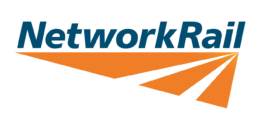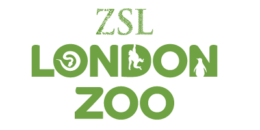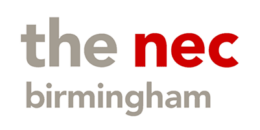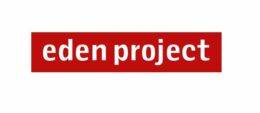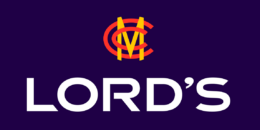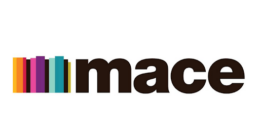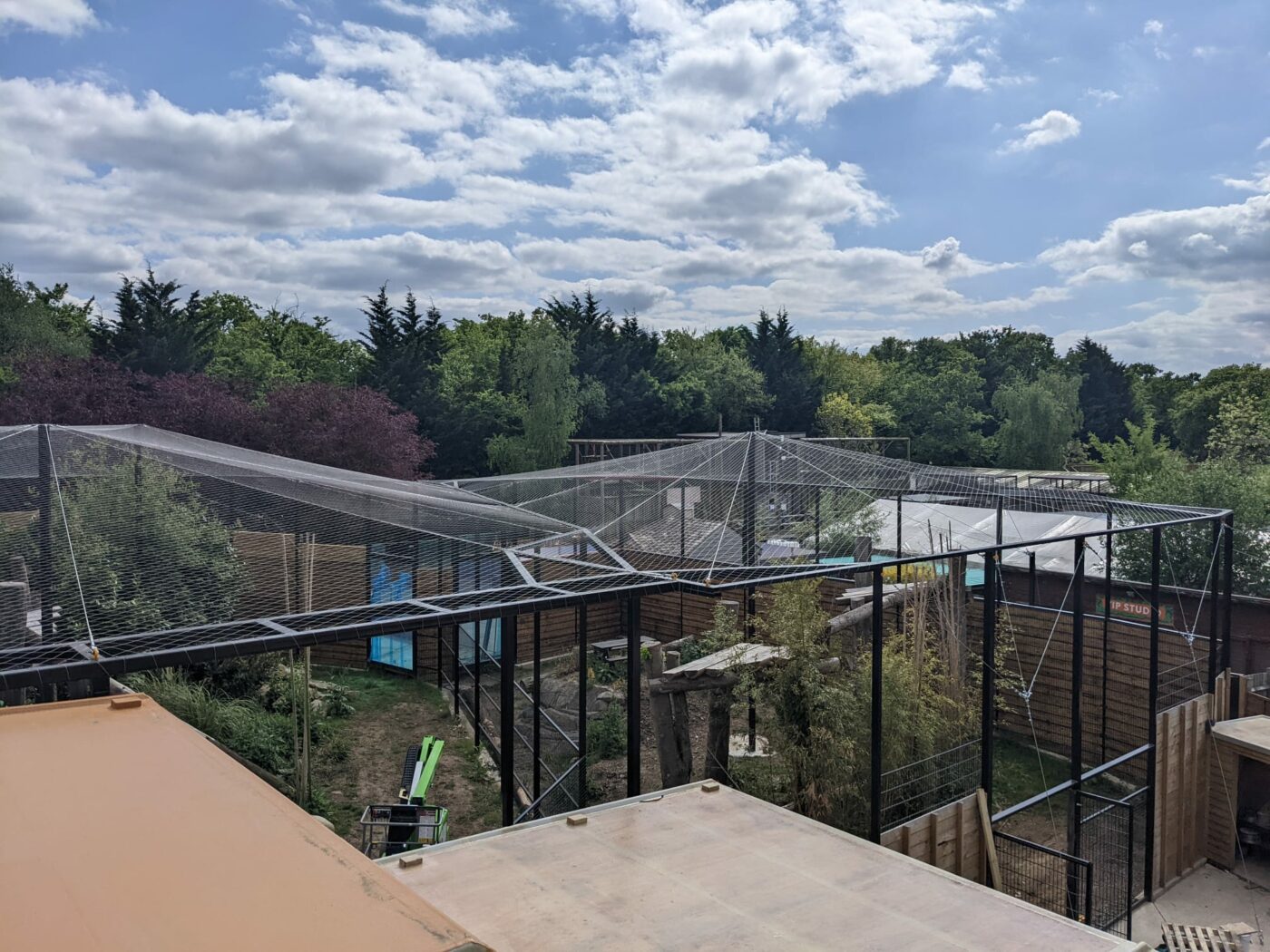
The team at Paradise Zoo contacted us in need of engineering expertise in designing and building a robust animal enclosure for their ‘Jaguar Jungle’, a first of its kind habitat in the UK for Jaguars with underwater viewing, set to open this year.
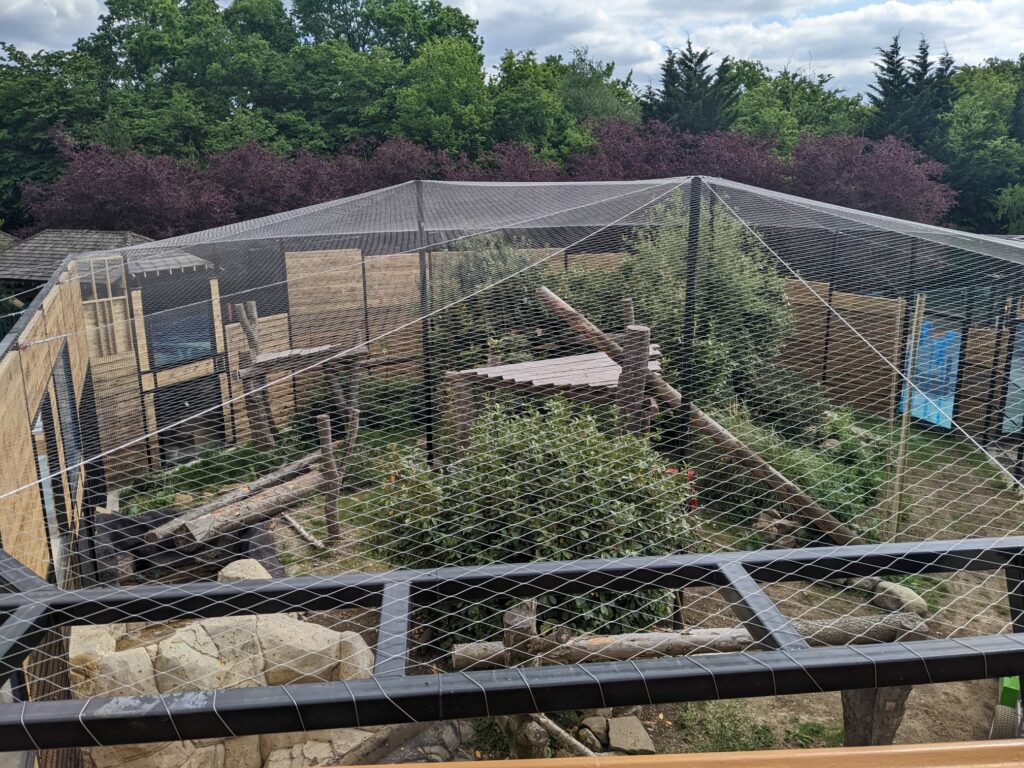
Our in-house expert Andy Traynor proposed a solution of a stainless steel cable net structure that would provide the stability and safety required for these category 1 animals.
The 32m x 30m net enclosure is split into two areas, one large and one smaller with a dividing wall and 5 net sections within, those sections are then stitched to the roof net cables along the perimeter beam. The central masts hold up a series of roof net cables that fan out to join the perimeter steelwork.
We designed, engineered and installed the 31 stainless steel structural cables and erected the 5 steel nets to cover the entire roof area of the enclosure, fixing to existing masts. The cable net is engineered to withstand all wind and snow loadings to ensure continued protection.
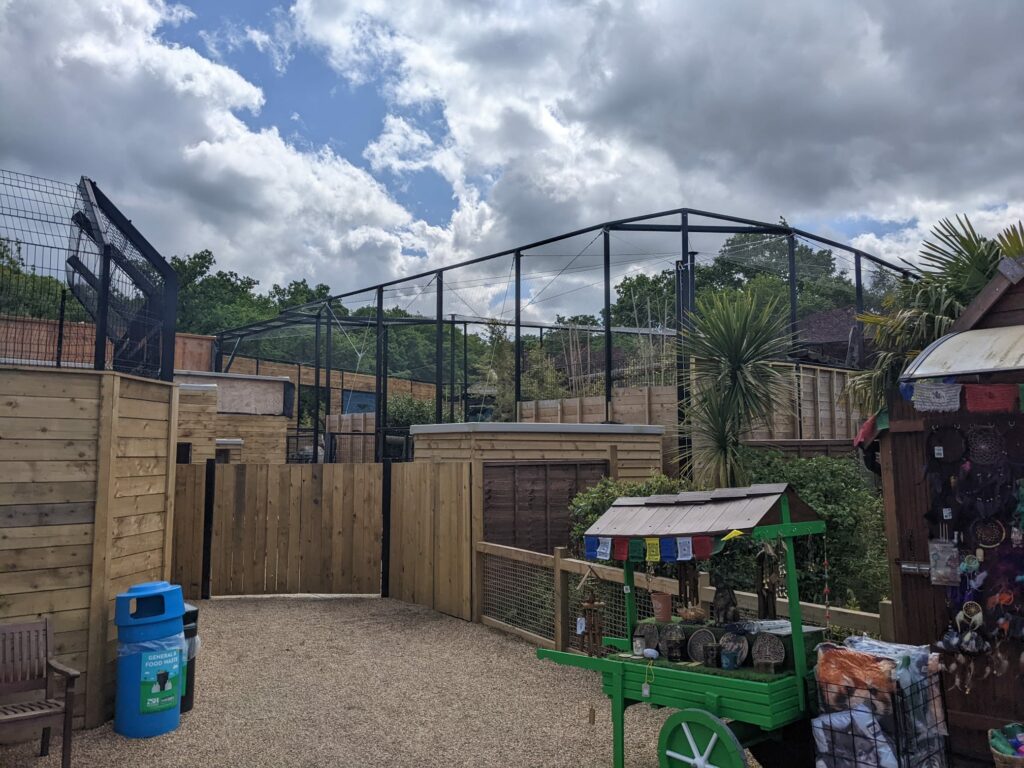
The result is a sleek and robust enclosure that maximises habitat space and animal welfare whilst providing visitor safety. The team at the zoo were very pleased with their new structure, Craig Whitnall, Commercial Director said “I couldn’t speak more highly of Base Structures, from the initial enquiry for advice, Andy has been an excellent source of advice and support”
For more information on the Jaguar Jungle visit the Paradise Wildlife Park website: New Jaguar Habitat coming soon… | Paradise Wildlife Park (pwpark.com)

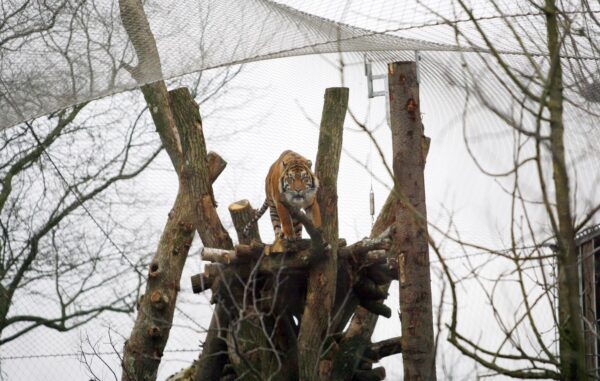
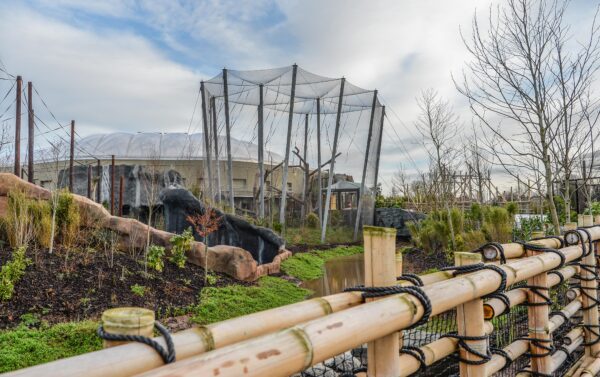
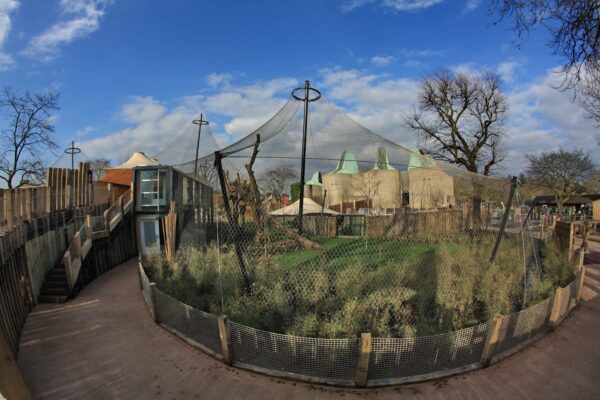
For our clients who run and manage zoos, animal welfare is their top priority. Most zoos exist as an opportunity not just for the public…

Wiltshire College required a refurbishment of their agricultural campus, Lackham and specifically of the Animal Care site.
We were approached by the main contractor Rigg Construction, as part of this project to design, supply and install 5 new external animal enclosures, to house Mcaws, Lemurs, Racoons, Otters, Marmosets and Ferrets.
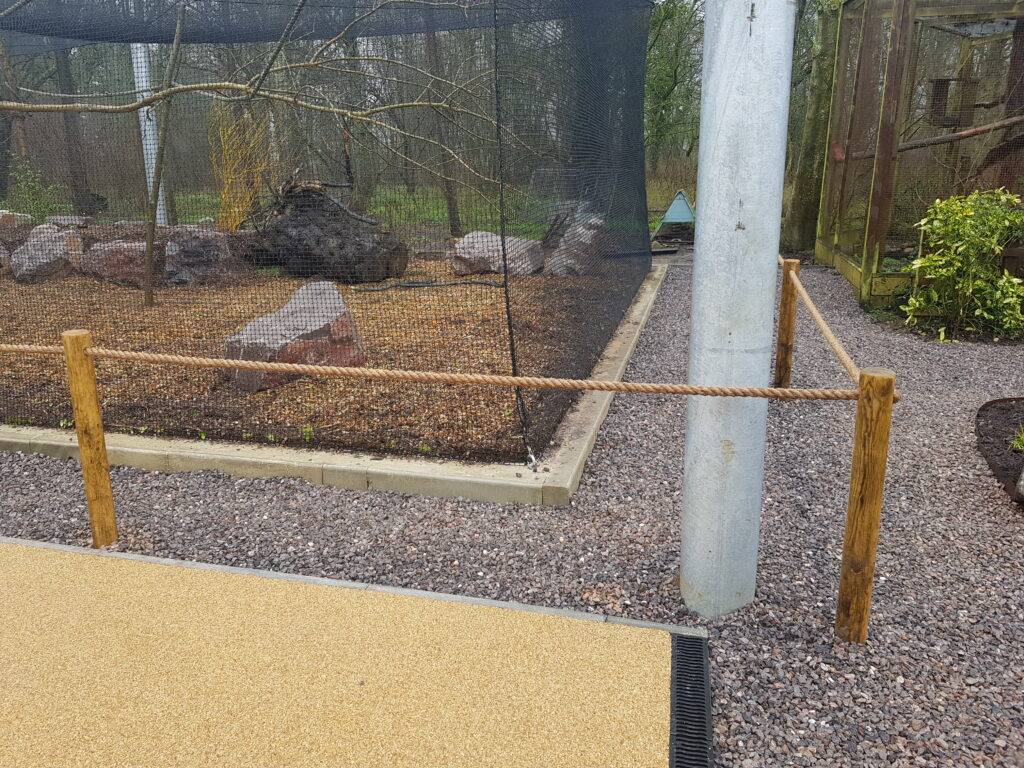
We erected the timber frames from glulam and eco-friendly animal friendly preserved timber then installed a range of different mesh fabrics and steels according to the safety requirements for each type of animal.
The result is an attractive new set of enclosures that maximise animal living space and welfare.




For our clients who run and manage zoos, animal welfare is their top priority. Most zoos exist as an opportunity not just for the public…
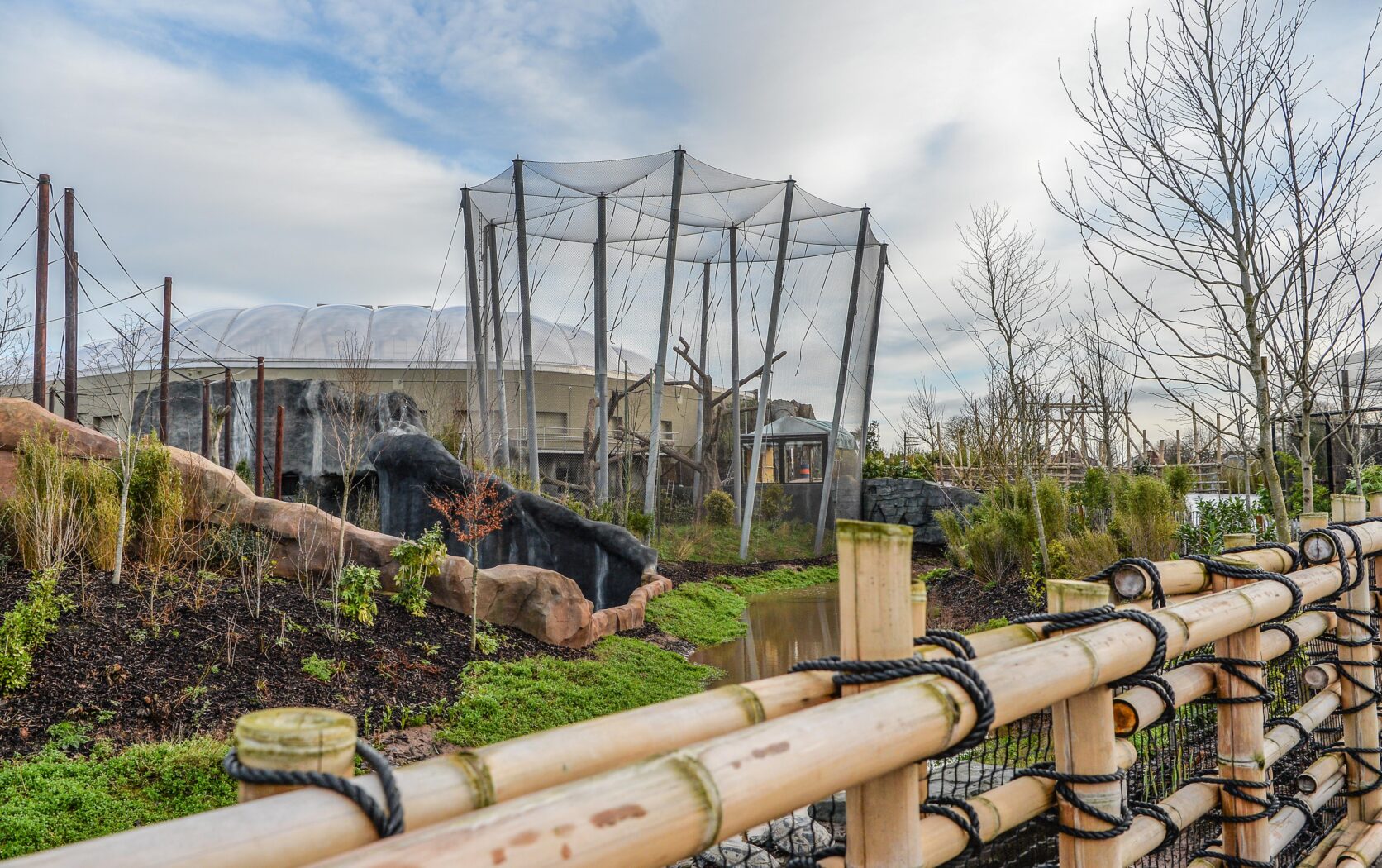
Base Structures were originally approached by the Zoo to offer their expertise to design an enclosure and aviary solution for a number of new home’s for Sumatran orangutans, Sulawesi macaques, Rhinoceros hornbill’s and Bali starlings, on the new £40m development, Island Projects, at Chester Zoo.
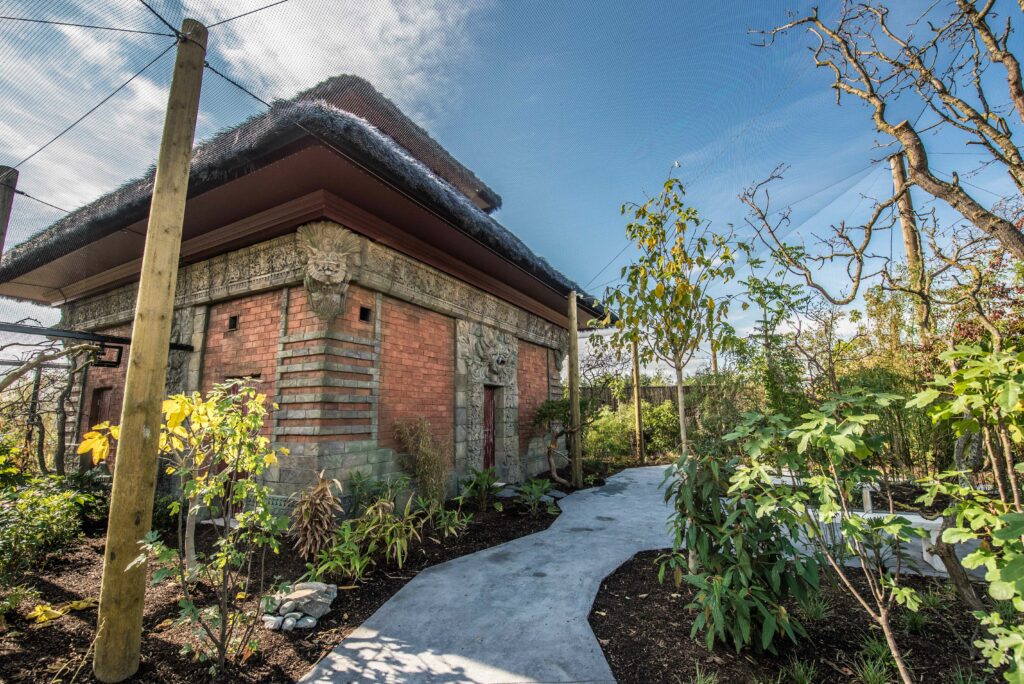
The main focus as always with any type of zoo enclosure is on the animal welfare, therefore very careful consideration was given on the selection and approach for the mesh netting, to ensure these critically endangered and beautiful species were provided with a safe and secure environment.
Utilising our network of specialist suppliers, we were able to select the appropriate stainless steel mesh product, and design an interface solution with other substrates on the enclosure, in a way that the orangutan in particular could not unpick or find a weakness.
The macaque enclosure, and hornbill and Bali starlings aviaries although less challenging, specific detail still had to be considered with regard to minimal visual impact, and a protective and secure environment for the apes and birds.
All of the enclosures and aviaries were delivered on time and to programme, through some challenging weather conditions, and the end client was extremely satisfied with the end result, that is the animals of course!
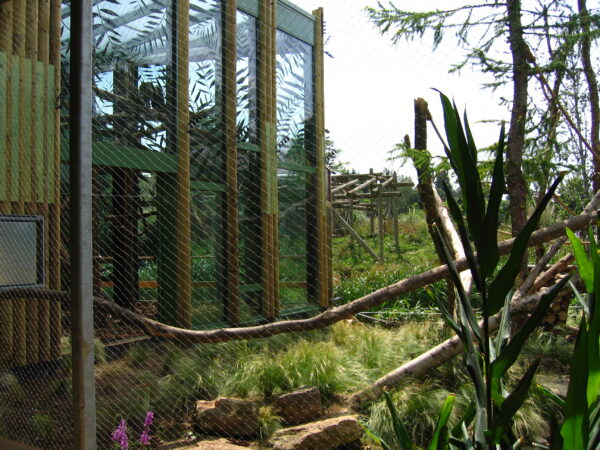

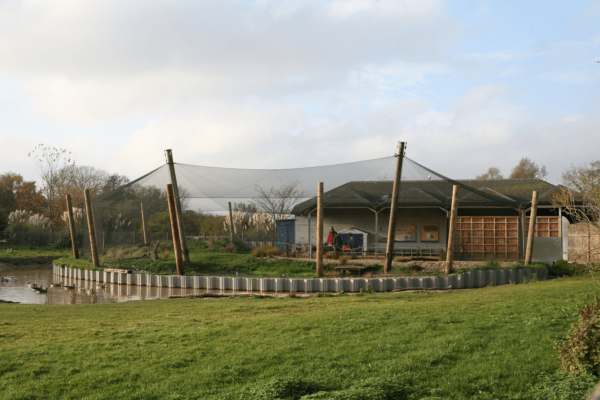

Bristol Zoo asked us to help with a new primate enclosure for the Howler monkeys.
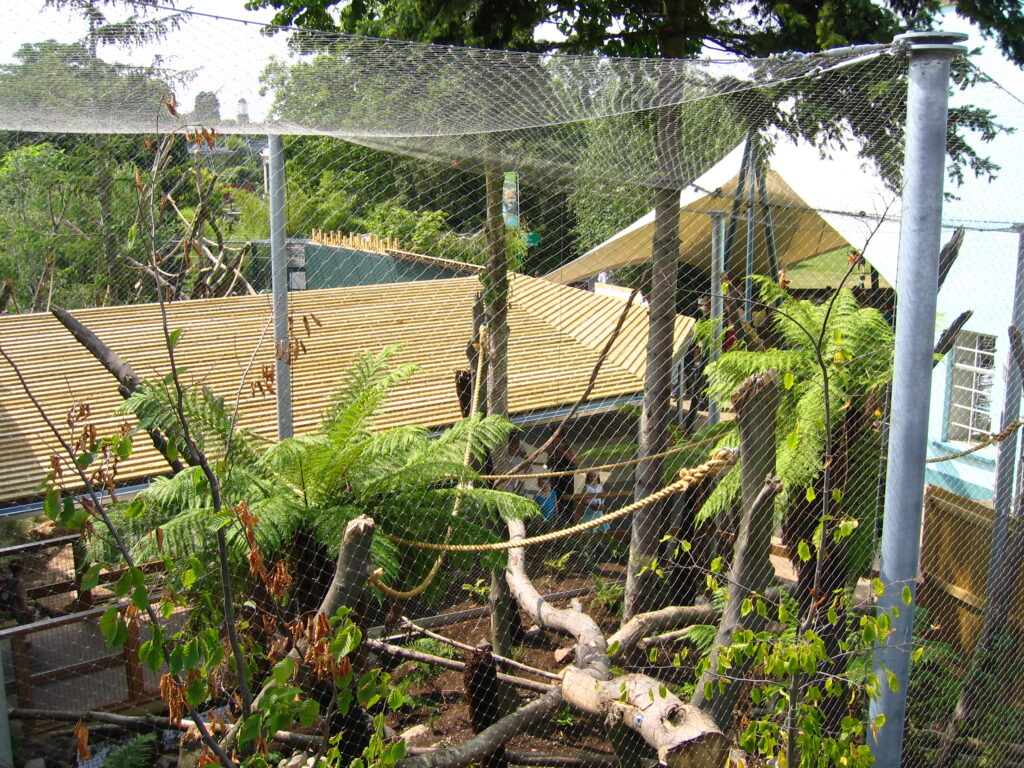
Base helped to design and build a habitat that maximised space and openness by incorporating natural features and using knotted 0.5mm gauge stainless steel wire, mechanically fixed to structural cables.
The innovative knotted 0.5mm wire provides a safe and monkey-proof enclosure for the howler monkeys as well as an unobtrusive visual experience for visitors.




This project was an exciting new build as part of Bristol Zoo’s development into their primate area including a enclosure for the Lemurs.
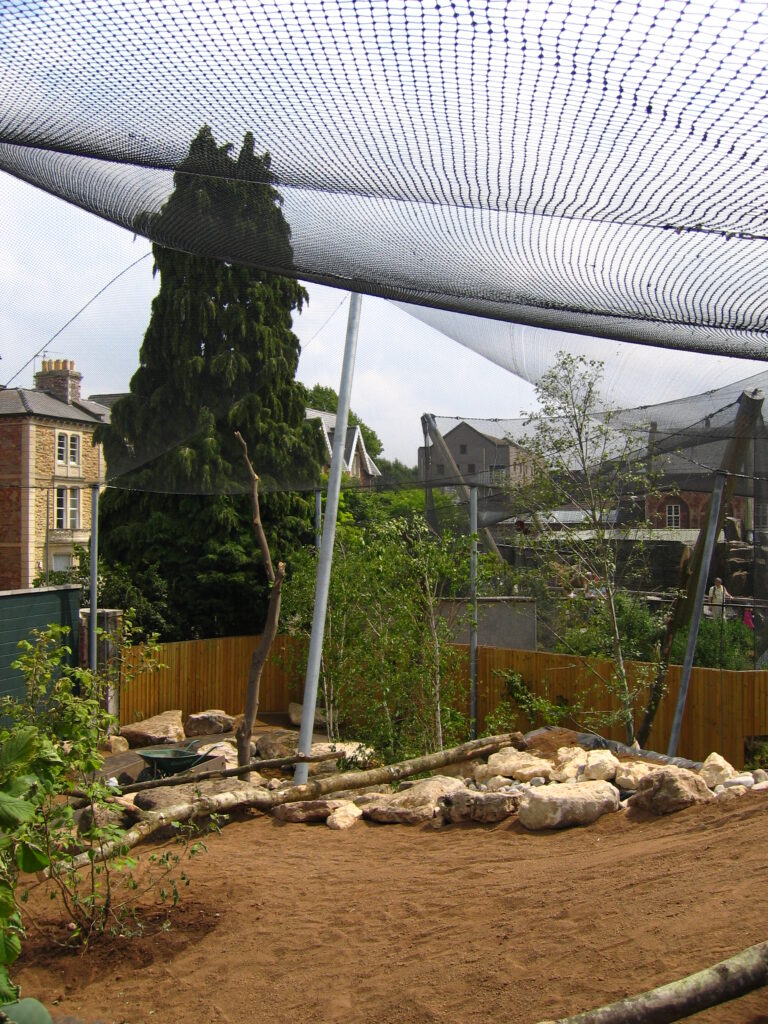
This enclosure was roofed and walled in durable and tough Polyethylene knotted net, hand stitched and mechanically fixed to the structural cables. Our installation team were able to put their professional climbing skills and working at height expertise into good use on this enclosure, as well as their expertise in making the netting monkey-proof!




As part of a refurbishment to an existing zoo structure, Base were asked to provide a cost effective solution to the net wall and roof replacement for the Bat enclosure at Bristol Zoo.
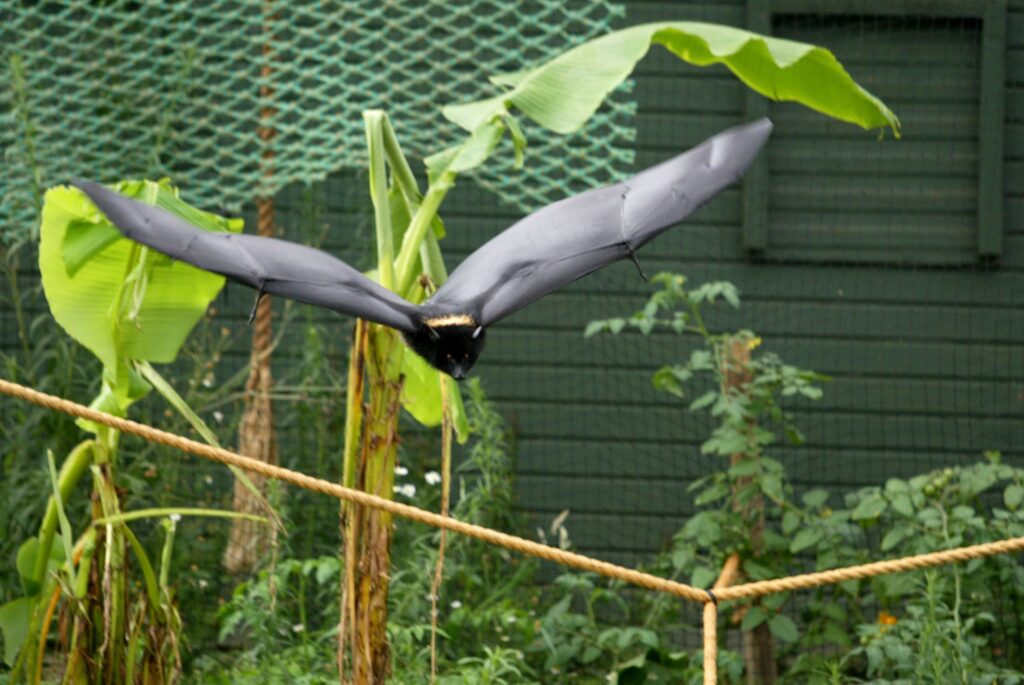
Using a black, knotless polypropylene net, this is a product with excellent durability, being both rot proof and UV stable. These nets were mechanically fixed to structural cables providing a safe and happy home for the animals.
Bat photography by Bristol Zoo.
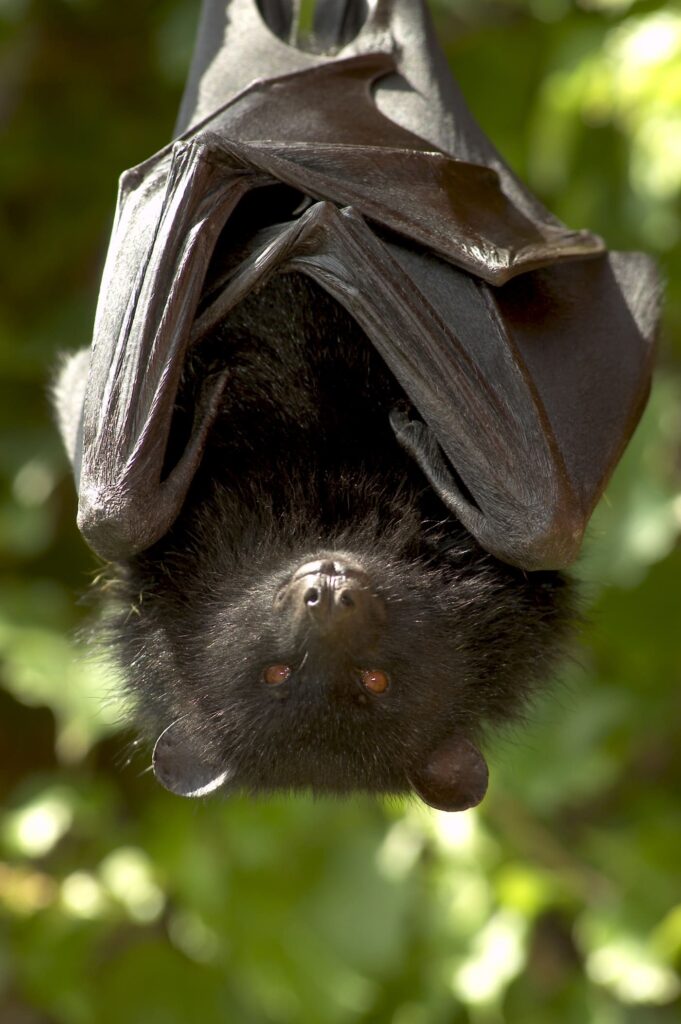




Banham Zoo in Norfolk, needed a mesh structure to house the newly arrived Snow Leopard, however two very important criteria were taken into consideration. Firstly, to have an enclosure that allowed the public to see the snow leopard fully and also that had a unique and striking design to attract attention.
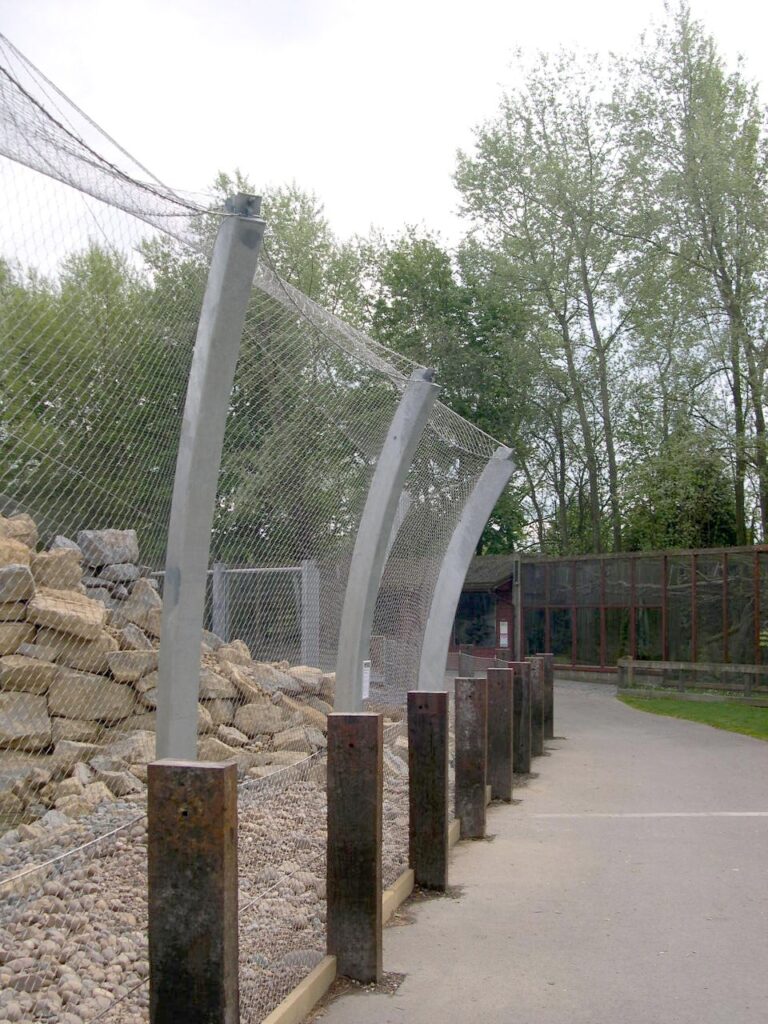
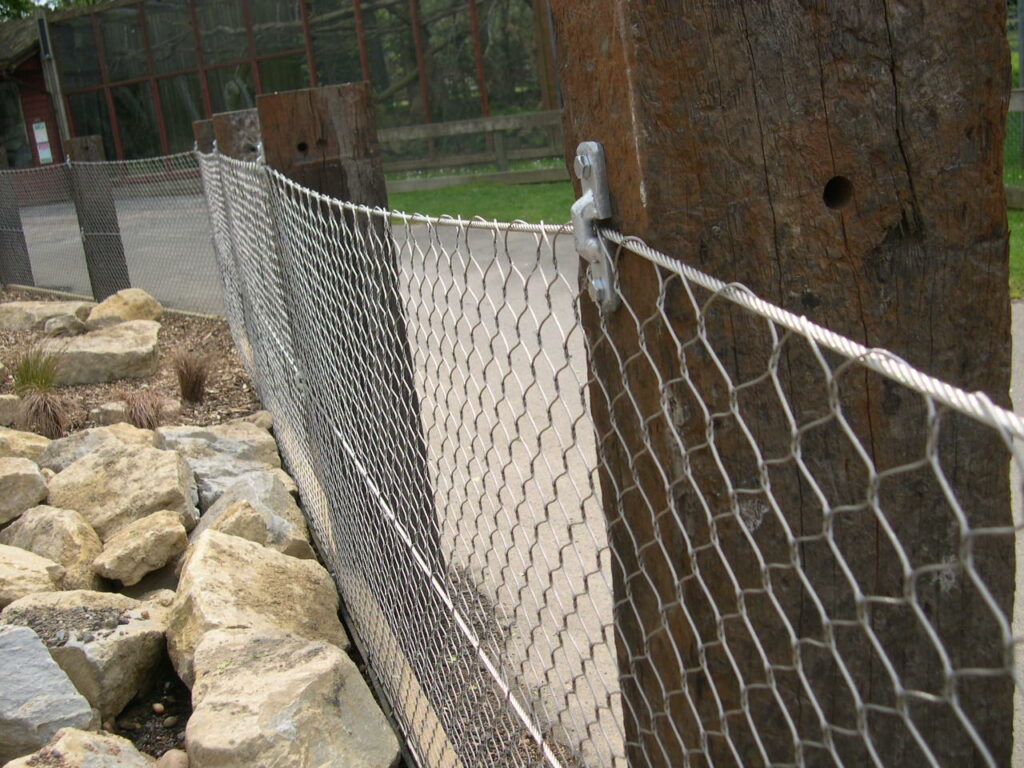
Our scope of work was to design, supply and install the supporting steel structure and netting. By using a state of the art woven stainless steel net structure, the net creates an almost invisible barrier between the public and the leopard, ticking all the boxes on the brief. We also had the net structure designed and manufactured in-house, specifically for this project to create the effect required.
It was a successful installation and Banham zoo are very pleased with the results, as was the Snow Leopard!




Chessington World of Adventures Zoo required assistance in re-developing their existing Squirrel Monkey enclosure with a new netted roof.
We designed, supplied and installed a bespoke solution that involved fitting PE mesh netting to the exiting support timber frame and monkey housing.
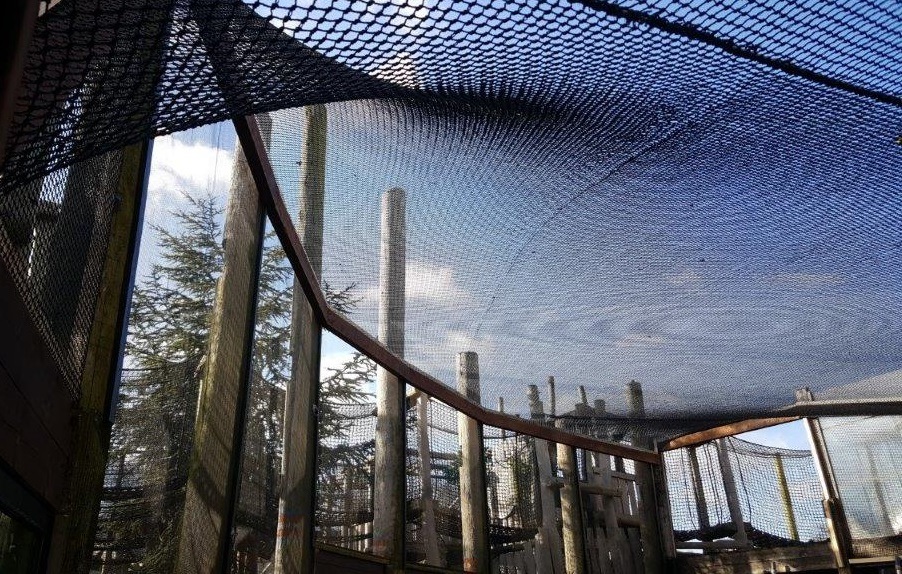
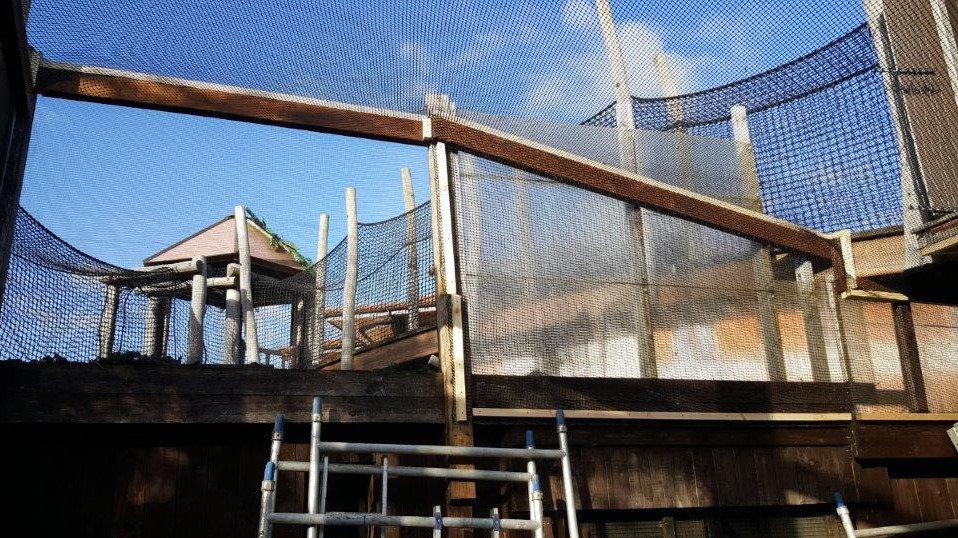
The new net roof has dramatically increased the living space available to the squirrel monkeys by allowing them to explore up and out of their existing enclosure whilst still being housed safely.




The critically endangered Sumatran tiger is one of the rarest subspecies of tiger with a remaining wild population of approximately 300 individuals. Due to a combination of poaching, habitat loss and human conflict the Sumatran tiger population has suffered a staggering 95% decline in the last decade, placing it at high risk of extinction on the IUCN Red List.
ZSL London Zoo have been working across the globe in a major effort to improve the fate of the Sumatran tiger, culminating with a new flagship ‘Tiger Territory’ facility. Not only enabling the zoo to embark on a critical breeding programme, ‘Tiger Territory’ also allows experts to gain valuable information about the elusive creatures that can be applied to conservation projects in the field. Tiger Territory is intended to be a centre to match-make Sumatran tigers from around the world, with the first inhabitants scheduled to be Jae Jae and Melati. Selected by the global breeding programme for the critically endangered species and prized as Europe’s most genetically important pair of Sumatran tigers, their cubs would be the first to be born at ZSL London Zoo for over 15 years.
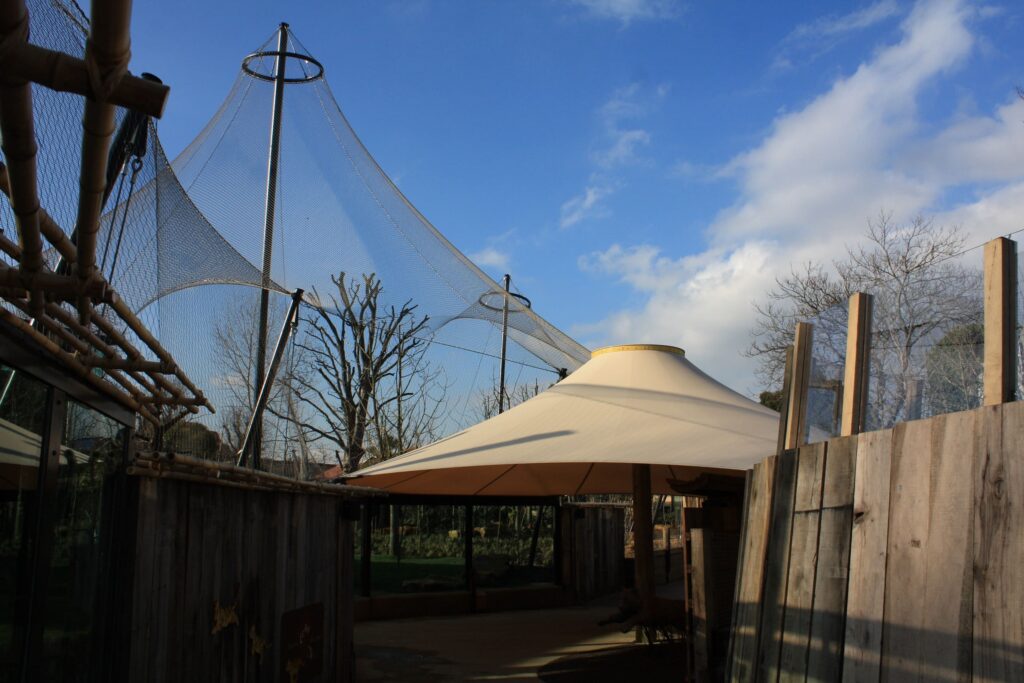
Robin Fitzgerald, Project Manager, ZSL London Zoo
Harry Everest, Project Manager, ZSL London Zoo
Mike Kozdon, Architect, Wharmby Kozdon Architects
Gavin Sayer, Associate, Dexter Associates
Andy Traynor, Head of Installation/Director, Base Structures
Andy Chiverton, Project Manager, Base Structures
For a project of such global significance the stakes were high for the new zoo structure. The primary focus was on animal welfare, conservation and the creation of the perfect environment for animal husbandry – rather than the creation of an architectural masterpiece. As Robin Fitzgerald, Project Manager at ZSL London Zoo summarised ‘Our goal was to seek out the latest technologies and designs that could match our husbandry and habitat requirements while still satisfying visitor needs.’
Key objectives were set out with a team of conservationists, tiger keepers and education specialists. From a habitat perspective the zoo enclosure clearly needed generous proportions, especially in height – the Sumatran tiger is a keen climber with a preference for observing its terrain from a high vantage point and can boast an impressive vertical jumping ability of up to five metres. The facility also had to meet strict husbandry requirements and be practical for everyday zoo keeper use. Capacity for future additions had to be factored in as well as the sustainability and energy efficiency of the enclosure. From a visitor perspective it was vital to offer a spectacular viewing experience with multiple perspectives, including a prominent, highly visible platform for the education department to deliver talks. All of this needed to be achieved within the existing constraints of the 186 year old site and adjacent architecture.
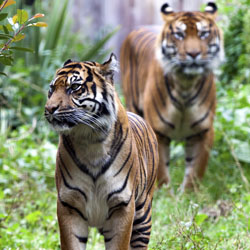
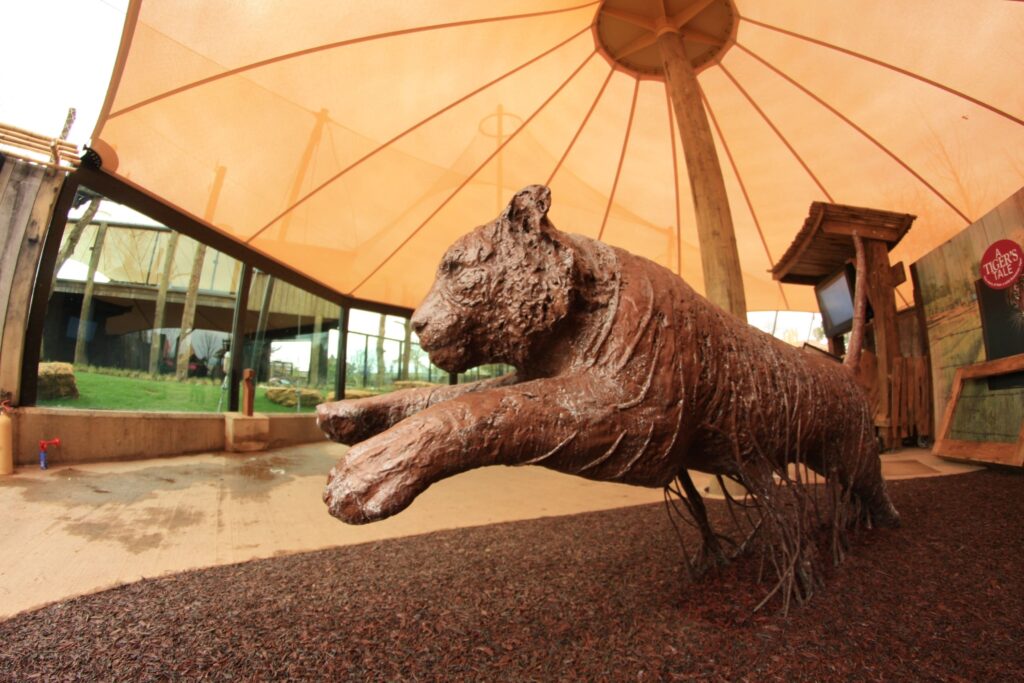
A team was assembled to turn this vision into reality that included Mike Kozdon of Wharmby Architects and specialist consultants including Base Structures and structural engineers Dexter Associates. Collaborating closely with the zoo, the team could apply the specialist knowledge that is necessary to turn the brief into not only a workable concept, but a flagship zoo enclosure.
A woven mesh structure was designed that could mould itself around the existing footprint shape and soar upwards into peaks, providing the necessary vertical jumping space. This design was not simply a response to the existing site geometry however. 90° angles were carefully and deliberately designed out to present sloping, organic lines to better reflect nature. A 3mm diameter cable woven 316 stainless steel mesh was selected with a 100mm x 100mm aperture – aesthetically the mesh would provide a thrilling experience for the public by virtue of its unobtrusive appearance. Floor to ceiling glass viewing panels topped with a fabric canopy would also allow the public to stand within millimetres of the tigers.
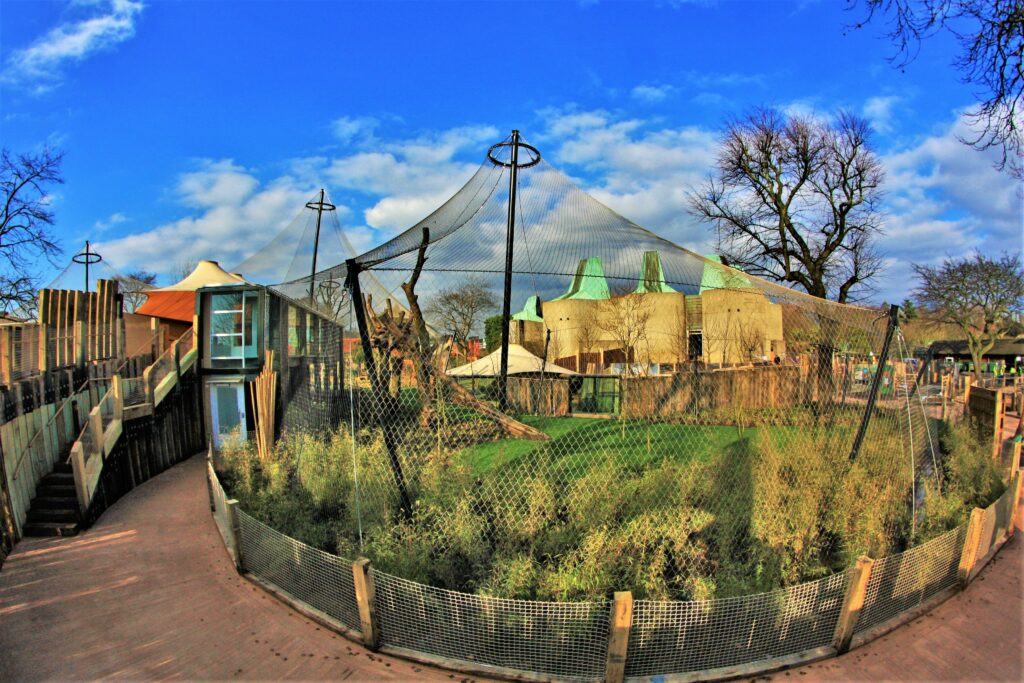
Tiger Territory was intended to be ultimate big cat exhibit for both visitors and the cats themselves. The dramatic form of the zoo enclosure creates a wonderful sense of drama when approaching Tiger Territory through the zoo grounds, yet the unobtrusive mesh allows the enclosure to simply fade away into the background when the tigers are viewed at close quarters. ZSL London Zoo’s brand new Sumatran tiger enclosure was given the royal seal of approval on Wednesday 20th March 2013, when it was officially opened by HRH The Duke of Edinburgh.
The Sumatran tiger enclosure was given the ultimate seal of approval on the 3rd February 2014 when a trio of healthy cubs were born to five year old Sumatran tigress Melati. Hidden cameras in the cubbing den allowed the zoo to remotely monitor the birth and the progress of the cubs 24 hours a day, with exclusive footage released on the ZSL You Tube channel (www.youtube.com/user/ZSLvideo.). The births are not only a huge achievement for ZSL London Zoo but also the international breeding program.




As part of their recent extensive renovations, Twycross Zoo wished to create a new focal point to the zoos entrance. To this end they commissioned a new visitor centre comprising a café, bar, gift shop and two new exhibits, one displaying their world renowned collection of wading birds and the other a flagship enclosure displaying the brand new snow leopard collection. Base were involved in the design and installation of this snow leopard enclosure.
The snow leopard enclosure faces onto the new visitor centre and is formed from galvanized steel perimeter posts and tie rods, supported by stainless steel cables and netting, keeping the people of Leicestershire safe from the snow leopards, and vice versa.
The snow leopards of Twycross zoo settled into their enclosure quickly and comfortably while visitors can enjoy the beautiful animals safely.




For our clients who run and manage zoos, animal welfare is their top priority. Most zoos exist as an opportunity not just for the public…
